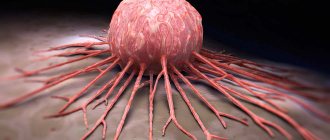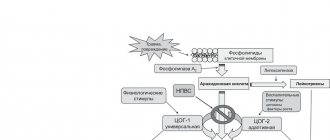Treatment for increased protein in the urine depends on the cause of the proteinuria. This can be stress, physiological changes during pregnancy and intense physical activity, as well as a number of diseases. To find out how to reduce protein in the urine in a certain case, you need to be examined by a doctor. Only a specialist will be able to quickly and timely recognize diseases that have been silent for a long time, such as diabetes mellitus or glomerulonephritis. Reducing protein in the urine is achieved by taking special medications, and treatment with folk remedies is also possible. Increased protein in test results, provided that it falls within the normal range, may be the result of insufficient hygiene before urine collection. Protein particles are found in vaginal secretions in women and sperm in men, and can get into the container if not washed well. For the same reason, there may be a change in the child's results. A urine sample should be taken to confirm or refute the presence of elevated protein.
Protein in urine
Protein in the urine is found in small quantities in healthy people.
Normally, the amount of total proteins in urine per day is 100 mg.
However, such amounts of protein are not determined by modern laboratory methods.
The largest percentage of protein in normal urine is uromucoid, a protein synthesized in the kidneys.
The remaining proteins in urine are completely identical to the composition of blood proteins.
The presence of protein in the urine is usually detected when its norm is tens of times higher.
This condition is called proteinuria (protein in the urine).
Depending on the location of the appearance of protein in the urine, the following are distinguished:
- The appearance of protein in the urine occurs when there is a sharp increase in protein in the blood.
- Renal cause of protein in urine
- Protein in urine due to inflammation in the urinary tract
Protein in urine in men.
medical service, doctor
Lenkin Sergey Gennadievich
The content of this article has been checked and confirmed for compliance with medical standards by a dermatovenerologist, urologist, candidate of medical sciences.
Lenkin Sergei Gennadievich
| Name | Term | Price |
| Appointment with a urologist | 900.00 rub. | |
| General urine analysis | 1 day | 350.00 rub. |
Causes of occurrence and development of pyelonephritis
Kidney inflammation occurs when a lower urinary tract infection spreads upward through the urethra to the bladder and from there along the ureters to the kidneys.
The main cause of pyelonephritis is infection in combination with impaired urine flow. Any problem that interferes with the normal flow of urine increases the risk of acute pyelonephritis. For example, urinary tracts that are unusual in size or shape are more likely to lead to acute pyelonephritis.
Also, local hypothermia of the lumbar region can cause the development of pyelonephritis, even in the absence of anatomical features and with normal urine outflow.
Kidney disease as a cause of protein in the urine:
in this case, protein leaks from the blood into the urine due to poor kidney function.
This may happen when:
- purulent inflammation of the kidneys (pyelonephritis),
- allergic attacks on kidney tissue (glomerulonephritis),
- acute and chronic poisoning.
Inflammatory diseases of the urinary tract can cause protein in the urine:
In these cases, purulent cells and tissue fluid penetrate into the areas of inflammation. Given the high protein content in them, it is also detected in the urine.
Based on the amount of protein found in the urine, it is customary to distinguish:
- moderate loss of protein - up to 1 g per day
- average protein loss from 1 to 3 g per day
- pronounced loss of protein - more than 3 g
The presence of large protein molecules in the urine most often indicates a serious kidney pathology. The kidney filter practically does not work in these cases.
Therefore, in modern urine tests, the protein composition of molecules is often determined.
Bence-Johnson protein is isolated separately in urine.
It is a sign of multiple myeloma or Waldenström's macroglobulinemia.
Most modern methods for determining the quantity and qualitative composition of proteins in urine are based on protein coagulation in urine or at the boundary between urine and acid.
Proteinuria can be physiological - with increased physical activity and sports training, emotional stress, poor nutrition and water regime.
The pathological presence of protein in the urine means dysfunction of the kidneys and urinary system.
Proteinuria can be of glomerular or tubular origin.
In the first case, the pathology occurs at the level of the renal glomeruli - with glomerulonephritis, in the second - in the renal tubules.
Normally, protein is also found in urine, but in small quantities, and only in its low molecular weight forms.
The presence of high molecular weight protein fractions means an increase in the permeability of the tissues of the urinary system as a result of pathological processes in them.
Deviations from normal protein content values are detected during colorimetric analysis .
If an increased concentration of protein fractions is detected, the test is repeated (since this analysis often gives false positive results).
If positive results are repeated, a general blood and urine test is performed, as well as studies to determine the nature of the protein fractions (most often they are represented by albumin).
Analysis for protein in urine is indicated in the following cases:
- Swelling of the limbs, face.
- Changes in color, density, and transparency of urine.
- Pain in the lower back, sacral area.
- The appearance of blood in the urine.
- Dropsy of the abdominal cavity.
- Increase in body weight.
- Fast fatiguability.
- Hypertonic disease.
- Glomerulo- and pyelonephritis, nephrosclerosis, nephrotic syndrome.
- Chronic renal failure.
- Unfavorable heredity in relation to nephropathies and kidney diseases.
- As part of preventive screening upon reaching 50 years of age, long-term smoking, diabetes mellitus, systemic collagenosis, nephropathology.
- During the diagnosis and treatment of cardiac diseases.
Determination of protein concentration in urine is carried out after the end of treatment in order to assess its effectiveness and monitor the dynamics of changes in the patient’s body.
How should you prepare for a urine protein test?
- Seven to ten days before the study, it is necessary to exclude taking any medications that could affect the desired indicator. These can be diuretic drugs, non-steroidal anti-inflammatory drugs, cardiac glycosides, antibiotics, sulfonamides, uroseptics, hormonal drugs, etc.
- For analysis, you need an average portion of morning urine.
- When conducting repeated clarifying tests, 24-hour urine is required. Collecting it begins with the second urination of the day and continues throughout the day.
- In the morning, before collecting urine, it is necessary to perform a thorough toilet of the genitals.
- Two days before the test, you should refrain from drinking alcohol, spicy, fatty and fried foods, as well as foods that change the color of urine.
In addition to pathologies of the urinary system, a number of other pathologies can cause the appearance of protein in the urine:
- malignant tumor diseases,
- endocrine dysfunctions,
- intestinal obstruction,
- infectious and inflammatory processes in the urogenital tract,
- neurological diseases,
- taking medications that have a nephrotoxic effect, etc.
If the rules for collecting urine, blood, or urogenital secretions are violated, the test results may be false positive.
Treatment for deviations from normal values of protein in the urine depends on what caused them.
If you detect protein in your urine, contact the author of this article, a urologist in Moscow with 15 years of experience.
Source
How to determine your daily protein intake?
A lack or excess of protein in the body can lead to diseases or irreversible consequences. Therefore, a person who cares about health and appearance must be able to correctly calculate the protein requirement.
Before calculating your protein intake, you need to know your ideal body weight. To do this, use Brock's formula, where P is a person's height:
- P (up to 165) – 100;
- P (up to 175) – 105;
- R (from 176) – 110.
After obtaining the ideal mass, you need to take into account physical activity and multiply by the desired coefficient. For example, if a person does not play sports, body weight should be multiplied by 1.2. For physical activity twice a week, a coefficient of 1.6 is used. During regular physical activity, ideal body weight is multiplied by 2.
Protein in urine
Protein in urine
– a serious disorder in the body. A healthy person does not have an increased amount of protein in the urine. If the concentration is no more than 0.03 g/l, as well as if there are traces in the physiological fluid, there is no need to sound the alarm, but if, after taking tests, the numbers exceed this norm, you should urgently consult a specialist. Before taking tests, do not use acetazolamide, colistin, aminoglycoside and other drugs.
Urologist
is a doctor who treats problems of the genitourinary system. In the modern world, especially with an urban lifestyle, many people suffer from such diseases. But urology has stepped far forward; it promptly recognizes the prerequisites for the disease, conducts a high-quality examination and prescribes adequate treatment, which quickly relieves a person of discomfort and inconvenience, returning him to a healthy life.
Causes of glomerulonephritis
- The leading positions are occupied by bacterial (sepsis, endocarditis, tonsillitis, periodontitis, caries, diphtheria, meningitis, typhoid fever, pneumonia, etc.) and viral (mumps, hepatitis, measles, rubella, herpes simplex, etc.) infections. Next come:
- Parasitic diseases (trichinosis, schistosomiasis, toxoplasmosis, malaria).
- Systemic pathologies with an autoimmune mechanism (systemic lupus erythematosus, systemic vasculitis, etc.).
- Use of vaccines and serums; blood transfusion (blood transfusion).
- Poisoning with substances (ethanol, lead, mercury, cadmium, organic solvents, etc.).
- Irradiation.
- Toxic effect of drugs (for example, penicillamine).
Hypothermia is a significant trigger factor.
Causes of glomerulonephritis in children
All of the above is also true for children. To this it is worth adding dysfunction of the immune system of a hereditary nature.
In the first place (in the case of an acute form of the disease) is a previous streptococcal infection (acute tonsillitis, scarlet fever, pneumonia, etc.).
The underlying causes of the chronic form often remain unknown. Various allergic and autoimmune diseases play a major role in the development of both forms of damage to the glomerular apparatus.
Causes of protein in urine
Often protein in urine
found in pregnant women. There is no need to worry too much, but it is better to consult a doctor. Typically, protein appears due to stress or hormonal imbalances, as well as due to an increase in the size of the uterus. In addition, protein is noticed after eating raw eggs or fresh dairy products.
You should not eat such foods before taking tests. In all other cases, the cause is a dysfunction of the kidneys and organs that accumulate and excrete urine:
- pathologies;
- cancers of the kidneys and urinary tract;
- concussion;
- epilepsy;
- consequence of stress;
- hypothermia.
Increased amounts of protein are also seen in athletes due to protein intake and heavy exercise. Follow the recommendations of doctors: you should go for an examination with a urologist at least once a year, undergo an ultrasound of the kidneys, do not have sex with casual partners, eat a balanced diet, lead an active lifestyle and avoid stress.
Who's at risk
High-risk groups include:
- patients with kidney stones or other kidney or bladder diseases;
- aged people;
- people with a suppressed immune system (for example, diabetes, HIV/AIDS or cancer, taking hormonal medications);
- patients with vesicoureteral reflux (a condition in which small amounts of urine return from the bladder into the ureters and kidneys);
- men with prostate diseases;
- people who tend to wait a long time before going to the toilet due to psychological characteristics or profession;
- people with urinary incontinence - when, for various reasons, the muscles that hold the contents of the bladder inside weaken, and when coughing, sneezing, or laughing, a small amount of urine may be released involuntarily.
There are a number of factors that make the body more vulnerable to infection, such as the use of a catheter or surgery in the urinary tract.
Despite the fact that people of any gender and age group can experience the disease, most often they suffer from it:
- Children under seven years old - due to the peculiarities of anatomical development.
- Young women. Several factors can provoke pathology: the onset of sexual activity, pregnancy, childbirth.
- Men with prostate adenoma.
Why is protein in urine dangerous?
According to the physiological structure, the pattern of pathological deviation, indicating the appearance of protein in the urine, signals a reaction of its increased utilization from cells and tissues.
This phenomenon is detected when the filtering ability of the kidney tissue membranes is impaired. Together with protein, red blood cells can be washed out of the bloodstream, leading to signs of anemia and a change from straw-colored urine to bloody. Since the participation of protein structures in the functional activity of almost all areas of the body is vital, including the stabilization of protective parameters, allergenic and infectious resistance, ensuring hormonal balance, etc., their significant loss has negative consequences.
The lack of a sufficient level of protein in the bloodstream has a negative impact both on the functionality of individual structures of the internal space and on the activity of entire systems, leading to disruption of the homeostasis of the entire organism. This threatens to slow down all restoration functions in organs and systems, significantly delaying the healing process.
Why might its level be increased?
There may be several reasons for increased protein levels in the blood.
A critically high level can be provoked by:
- autoimmune diseases;
- chronic inflammatory processes;
- acute infections;
- oncology.
Relatively high levels are provoked by:
- infectious intestinal diseases;
- food and non-food poisoning;
- bleeding, previous surgical interventions;
- drug overdose.
It is worth noting that they often write on the Internet or other unverified sources about the benefits of a protein diet. It is described that consuming protein in large quantities and reducing the consumption of fat and carbohydrate foods has a beneficial effect on the body, leads to weight loss, etc.
In fact, excess protein in food disrupts the functioning of many systems; moreover, it is not entirely rationally consumed by the body and is not fully absorbed. Among other things, this disrupts the overall composition of the blood.
Symptoms of the disease
If a person has increased protein in the urine
, this indicates a urological disease. If you experience the following symptoms, you should contact a highly qualified specialist:
- fast fatiguability;
- bone pain;
- dizziness;
- fatigue, confusion and drowsiness;
- change in urine color - it becomes more whitish;
- chills and fever are symptoms that occur when there is a high level of protein.
Newborns also have increased protein, but don’t be alarmed, this is how it should be. After all, its absence is also wrong. Therefore, protein should be monitored for both children and adults and consult a doctor at the first symptoms.
Physiological limit of normal
With a healthy functional state of the body, in men and women, the quantitative content of protein in the urine reaches 0.14 g per liter of liquid, without indicating kidney dysfunction.
If the value exceeds the threshold of 0.33 g/dm 3, the development of a pathological deviation in the form of a disease is observed, the current indicator of which is proteinuria. The pathology can be mild, moderate or severe. In the children's age category, the norm of proteins in the urine can be 0.036 g per liter; its increase to 0.1 g/dm 3 diagnoses a moderate form of proteinuria. During gestation, the normalized threshold for protein in urine shifts to 0.03 g per liter. A more significant increase indicates the development of a pathological disorder in the urinary system or urine disposal.
An indicator of a shift in the protein normal limit upward is various pathologies, or a temporarily manifested deviation that is transient in nature. This form of proteinuria is observed during a fever or significant loss of water, stress, burns or prolonged hypothermia. In men, the presence of protein in the urine is observed during strenuous physical activity.
Pyelonephritis in pregnant women
Pregnancy causes many transformations in the body, including physiological changes in the urinary tract.
Elevated levels of progesterone (a hormone that supports normal pregnancy) and increased pressure on the ureters increase the risk of pyelonephritis. Pyelonephritis in pregnant women may require hospitalization if this condition threatens the life of both mother and child. Also, untreated kidney infections in pregnant women increase the risk of premature birth, placental abruption, intrauterine infection of the fetus and damage to its nervous system. With proper and timely treatment, all these consequences can be avoided, childbirth occurs on time, and the prognosis is favorable for both the woman and the child.
During pregnancy, it is extremely important to understand whether this is the first case of the disease in a woman’s history, or whether the disease was chronic in nature, and an exacerbation occurred during pregnancy. Statistics show that primary kidney inflammation in pregnant women is treated successfully and without complications.
To prevent pyelonephritis in pregnant women, it is necessary to be tested for infections when planning pregnancy. Urine cultures are also performed at the beginning of the second trimester. Early detection of UTIs can prevent kidney infections.
The following will also help prevent problems:
- Moderate physical activity, walks in the fresh air, gymnastics for pregnant women. The goal is to strengthen muscles and improve the tone of internal organs, improve blood flow.
- Compliance with drinking regime. Pregnant women should consult their primary care physician.
- Empty the bladder at least every 3-4 hours to prevent congestion.
- Following a special diet that promotes the flow of urine (if there was kidney inflammation before pregnancy).
Methods for laboratory detection of pathology
Proteinuria is diagnosed based on laboratory confirmation of the quantitative excess of the permissible threshold of protein present in the urine. The technique is based on its molecular weight, which is used to evaluate the filtering parameters of the kidney membranes. An overestimated value of the molecular weight of proteins signals serious damage to the renal tissue with a violation of its functional ability.
According to the laboratory conclusion of the presence of protein and leukocytes in the urine, an inflammatory process is diagnosed, and a combined increase in the concentration of proteins and the presence of red blood cells indicates traumatic damage to the tissues of the urinary tract. There is a significant variety of methods for quantitative and qualitative determination of protein in urine; the use of a specific one is determined by the doctor, depending on the individual parameters of the current pathology indicators.
Modern medicine makes it possible to treat diseases of the genitourinary system quickly and very efficiently. Clinics use many examination methods. Among them are the Bence-Jones method, and the method for determining protein breakdown products, and indicator paper, and the unified Brandberg-Roberts-Stolnikov method, as well as the Biuret method and photoelectrocolorimeter.
Herbs for glomerulonephritis
Herbs are powerful medicines. In an individually selected combination, herbal infusions can provide a full range of “services” necessary in the treatment of glomerulonephritis: reduce blood pressure, eliminate swelling and inflammation, restore tissue, harmonize metabolism, remove toxins and reduce their formation, etc. Can herbal infusion completely replace drug therapy? The answer to this question is very individual. In any case, only a herbalist can select it after examining the patient and familiarizing himself with the results of laboratory and instrumental studies. A herbalist can carry out his own diagnostics, for example, using the method of determining the state of various body systems using the iris of the eye (iridology).
In the treatment of patients suffering from glomerulonephritis, other holistic methods of traditional medicine can be used - classical and resonant homeopathy, osteopathy, acupuncture, qigong therapy. An individually selected diet and exercise regimen play a big role.
Are the methods of classical medicine combined with traditional ones? Yes. The “proportion” is determined by the duration and severity of the disease, the individual characteristics of the body and the course of the disease, and the choice of the person himself.
Make an appointment
Can there be protein in a child's urine?
The function of a child’s kidneys is to filter the contents of the bloodstream from toxic and unnecessary components, the molecular size of which is definitely small.
Such substances include:
- uric acid;
- urea;
- indican;
- ammonium salts;
- creatinine, etc.
At the same time, useful and necessary components of the blood, namely glucose and amino acids, are absorbed back through the membrane of the renal tubules at the primary stage of filtration of urine, which forms plasma, in the absence of proteins with high molecular weight.
During a daily interval, about 50 dm 3 of primary urine is transported through the kidneys of a newborn, but secondary fluid is released through the system, determining the components of diuresis per day. In an adult, about 180 dm 3 of liquid is utilized per day at the primary stage of filtration, while the total volume of diuresis per day averages two liters. In childhood, this figure depends on the general health of the child, his weight and surface area. If the child’s condition is good and the child is in full health, there is completely no protein in his urine, but even minor traces of up to 0.03 g per liter are not an indicator of the development of pathology.
Pyelonephritis in children
This is a common disease among children, ranking second in frequency of cases after ARVI.
The main risk group among children is preschool children. Due to their anatomical characteristics, the disease affects girls more often than boys. The most common causative agent of childhood pyelonephritis is Escherichia coli. In addition to it, proteus (protozoa), Staphylococcus aureus, and enterococci are often found in smears.
Acute pyelonephritis in children noticed in time is completely cured in most cases. After complete recovery for three years after the illness, regular examinations are required (the first three months - once every 10 days, then monthly) and medical supervision. After three years, an examination is required every 3 months so as not to miss an important asymptomatic pathology.
Treatment and prevention
The primary task of any person is timely monitoring of his own well-being and the signs that the body signals about existing pathological problems. If they are detected, it is recommended to visit a urologist and undergo the necessary types of diagnostic confirmation of the well-being of the body.
This approach will help to establish the root cause of detecting protein in the urine and select the optimally effective method for rapid recovery, completely eliminating the current pathological problem. Against the background of diabetes mellitus with proteinuria, the doctor will recommend adjusting the diet; with an increased level of vascular pressure, constant monitoring, taking stabilizing drugs, as well as limiting the consumption of sugar, salt and protein-rich foods is necessary.
A conservative form of normalizing the protein threshold in urine includes bed rest, a certain diet and corrective drug therapy, namely corticosteroids, antirheumatic drugs, ACE inhibitors, cytostatics and others.
When diagnosing protein in the urine, indicating the development of an inflammatory process, the formation of solid conglomerates, or an existing congenital defect in the development of the kidneys, it is necessary to be systematically observed by a specialized specialist.
Other proven methods
In addition to diet, there are other ways to adjust protein levels.
Folk remedies
The following can be used as folk remedies to reduce the concentration of protein in the blood:
- consumption of cranberry juice (lingonberries, cherries, red currants are also suitable);
- consumption of infusions of birch buds, parsley, corn cob;
- consumption of fir decoctions, pumpkin seeds;
- consumption of bee products.
Drug treatment
The following pharmaceuticals are used as methods of drug therapy:
- intended to lower blood pressure;
- inhibitors in general;
- immunosuppressants;
- drugs to correct sugar levels (for diabetes).









